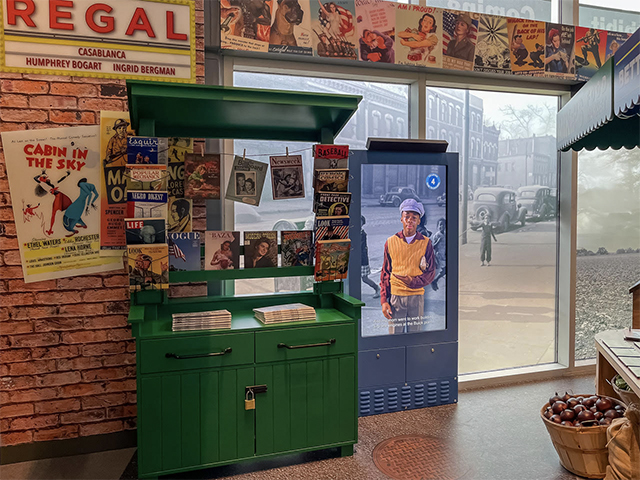Children on the Homefront – National Museum of the Pacific War
For a military museum, it is a challenge to promote the venue as “family friendly.” This was a challenge for the National Museum of the Pacific War in Fredericksburg, Texas with the opening of the Children on the Homefront – Growing Up with War exhibit. The experience features three American children during WWII as virtual guides. Walt is from downtown Chicago, Thomas is from rural Texas, and Mary is a Japanese American from LA who was sent to an incarceration camp in Wyoming.
The exhibit is broken into three areas, themed as the kids’ surroundings: A Texas farm, an urban street in Chicago, and a room in the incarceration camp.
Each area contains a life-size video where the respective child introduces themselves and gives a glimpse into their lives during the war.
Visitors are also challenged throughout the exhibit to engage in activities children did during the war through digital interactives. Guests can help the war effort by assisting in enemy plane spotting and collecting scrap for a scrap drive. In the incarceration camp, a tabletop interactive introduces visitors to some activities that Japanese Americans might have done to pass the time.
Young guests also interact with a life size suitcase and are asked to consider what they would bring, and can be packed into a single suitcase as they leave to go to the incarceration camp.
The three WWII era children lead visitors through this entire exhibit starting from their introduction videos, and carrying through to the digital interactives. These children help young visitors gain a deeper understanding of what life was like for children during the war.
Media design, video production, and digital interactive programs were all produced and installed by BPI. The BPI creative team was particularly sensitive to the children’s casting and the interpretative scripts, which had to be at once reassuring but also serious with the ramifications and impacts of war. The exhibit opening was particularly moving with families discussing what it would have been like to grow up during that dark period of American history.










